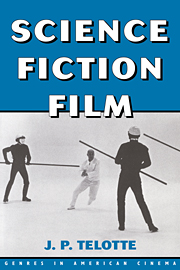3 - A Trajectory of the American Science Fiction Film
Published online by Cambridge University Press: 03 December 2009
Summary
In order to understand how the American science fiction film works and what it has, over its history, managed to accomplish, we need to view it against a brief chronological background. In fact, as is typically the case with cultural texts, we probably need to keep in mind several histories whose confluence and overlap have helped to shape our experience of the genre in film. For example, among other stories that this history implicates, we shall have to tap into the body of mythic and folkloric narratives in Western culture on which the larger field of science fiction draws, the development of a distinctive literary genre, particularly in the nineteenth century, the rise of pulp literature that finally gives the genre its name in the twentieth century, the early history of cinema that at moments seems practically synchronous with the appearance of the science fiction film itself, the development of a technological attitude in what we have come to know as the Machine Age (1900–40), and the gradual formation of a distinct cinematic formula, especially within the American cinema. In point of fact, though, it is almost impossible to isolate any one of these histories from the others, to speak of each separately without doing some injustice to the absent yet always-informing other discourses. Thus the following history, while proceeding in a roughly chronological and, in that respect, fairly conventional fashion, aims to contextualize the film genre within the continuum of generic, cultural, and even technological developments on which it has drawn and to which it bears constant witness.
- Type
- Chapter
- Information
- Science Fiction Film , pp. 63 - 120Publisher: Cambridge University PressPrint publication year: 2001



